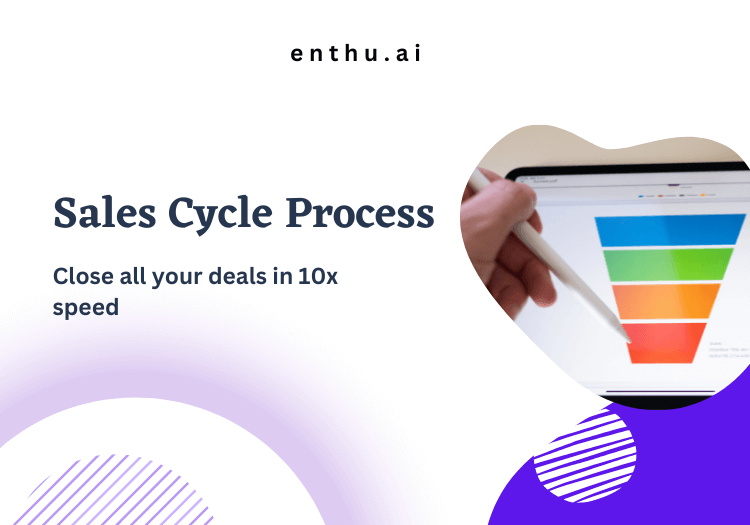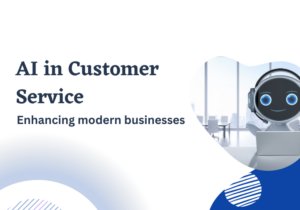7 Stages of sales cycle
1. Prospecting – Identifying potential leads
2. Contact and qualify – Initiating communication with leads and determining if they meet your ICP criteria.
3. Needs Assessment – Understanding the specific needs and challenges of the prospect
4. Present your product – Explain how your product or service can effectively address the prospect’s needs.
5. Handling objections – Overcoming any concerns or doubts raised by the prospect.
6. Closing – Securing the sale and finalizing the transaction
7. Follow up – Maintaining post-sale communication to ensure CSAT and long-term relationships.
Sales are hard. It can often feel like an uphill battle, frustrating and exhausting.
However, it doesn’t have to be that way.
There are a few steps that you can put into place to make the process easier for both you and your customer.
This is what we call “7 Steps of the Sales Cycle”, which we will discuss in this article.
These seven steps are essential for creating a healthy sales funnel for your business.
You must follow these steps consistently for you to have a better chance at maximizing profit potential from each lead your business receives
In this guide, you’ll find:
- What is sales cycle
- 7 stages of the sales cycle
- How to improve your sales cycle
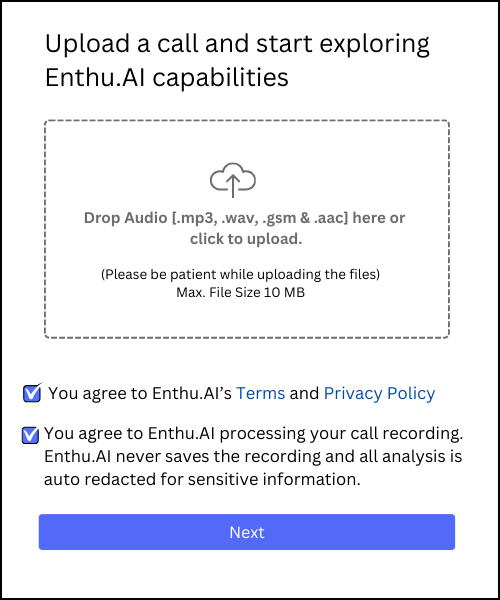
A. What is a sales cycle?
Sales is an important aspect of any organization. Without sales, you cannot move forward.
So it is very important that you have a sales process for your sales team to follow.
A sales cycle is a sequence of repeatable steps that a salesperson follows to convert a potential customer into a paying customer.
You can call it the roadmap for the sales reps because it shows them the path to reach their destination.
Also, it is quite similar to the buyer’s journey that a customer follows to buy a product.
B. 7 stages of sales cycle
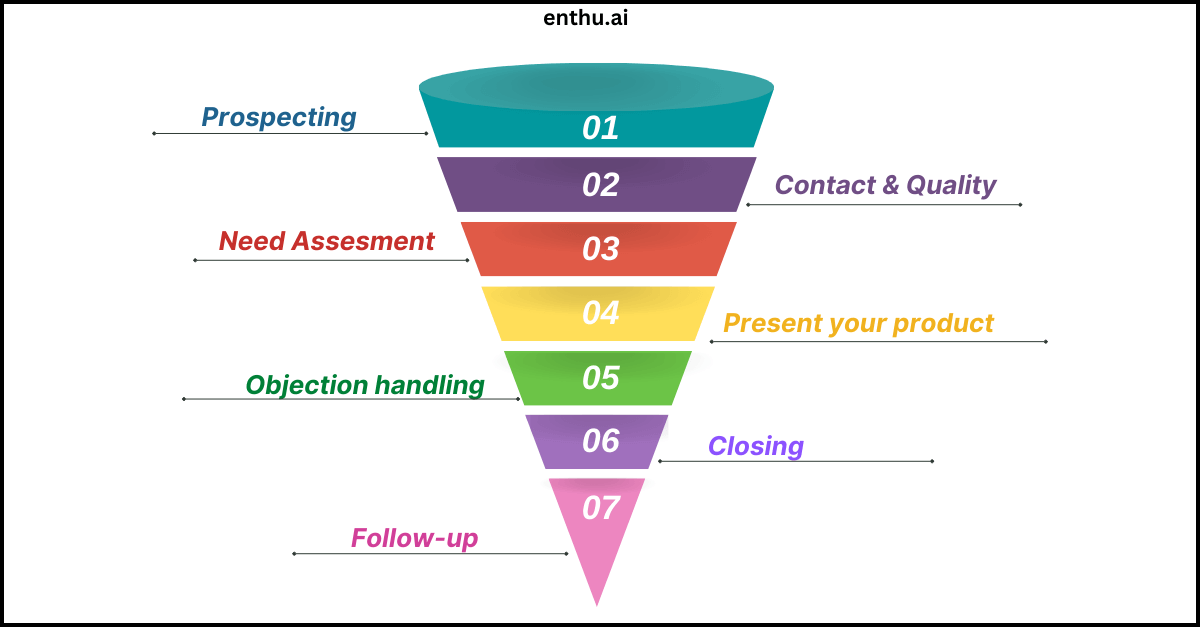
1. Prospecting
Prospecting is the first stage of sales process
At this stage, you began to search for individuals or companies who might be interested in your product or service.
Also known as lead generation, there are various ways through which you can find leads such as cold calling, social media, online marketing tools, referrals, networking at live events, purchased lists, etc.
Finding leads can be a daunting task. As per HubSpot, 42% of the sales reps name prospecting as the most challenging stage of the sales process.
 But before you begin any of this, you need to have an Ideal Customer Profile (ICP), i.e, you must know who your ideal customers are.
But before you begin any of this, you need to have an Ideal Customer Profile (ICP), i.e, you must know who your ideal customers are.
Based on this, you can begin to target those leads that match the descriptions set you.
Not only it will reduce your work but also helps you to close a lot of deals.
2. Contact and qualify
At this stage, you need to make initial contact with the prospects (if you use the phone as the medium for reaching out, ensure you open your calls in the right way).
This is done so that you can gather information about the target prospect.
To do that, you need to ask sales questions to your leads on topics related to budget, authority, need, and timeline.
By doing so, you can understand whether a lead qualifies to be your potential customer or not.
If they do not qualify, you can stop wasting any more time on that lead because as per marc wayshak, at least 50% of your prospects are not a good fit for your business.

But if one qualifies, then you need to assess the needs of that potential customer.
3. Needs Assessment
Now, you need to assess the needs an individual or company has from your product.
You can start by asking standard questions that can help you to extract important information from the prospect.
During this process, you must let the prospect talk more than you. It is imperative for the success of this step.
Also, do not talk about your product even if you want to.
All you need to do is to understand the challenges and the situations faced by the prospect and how your product can help to overcome the challenges.
You need to make sure your sales rep is understanding the customer need, for that do invest in a good quality assurance software.
Based on this information, you can decide on how to approach the prospect with your product.
4. Present your product
At this point, you need to prepare a formal presentation that talks about your product, i.e, you need to make the prospect realize the value of your product.
To do that, you must focus on those features and benefits that can solve the prospect’s problems that you came to know in the previous step.
So you must be very clear in your mind about the challenges faced by the prospect.
Also, you must do some external research about the prospect that can help you with your sales pitch.
You can bring in another executive to your meeting such as a product manager that can tell you the prospect in detail about the product.
It is done so that you can present your product in the best possible way.
5. Handling objections
At this stage, you must listen to any concerns or objections that prospects have regarding your product or proposal.
It is an important step and having objections is expected from the prospects.
You and your team must be able to handle any kind of objection that a prospect has.
If you can satisfy the prospect with your solutions, then you can expect that there is every chance that you will close the deal.
You must prepare yourself in advance to all possible objections that can be raised by prospects like objections related to onboarding, cost, or other parts of the proposed contract.
Read more: Take a look at call transcription tools to improve your sales number.
6. Closing
This is the step where prospects decide whether to purchase the product or stop the process.
This step will be successful only when you have implemented all the previous steps in the right way.
There are hundreds of ways in which you can close a deal but you must remember that it is not a standalone event.
In this step, the sale is completed only when both parties agree on the terms and price of the contract.
And all the objections have been resolved and the details related to fulfillment, delivery, and any other related action are finalized.
7. Follow up
Once you have a happy customer, you can nurture the relationship further by selling other products that provide value to the customer.
Also, when a customer trusts you he will refer your product to other people who need your product.
As per HBR, more than 90% of B2B buying decisions are made with peer recommendations.
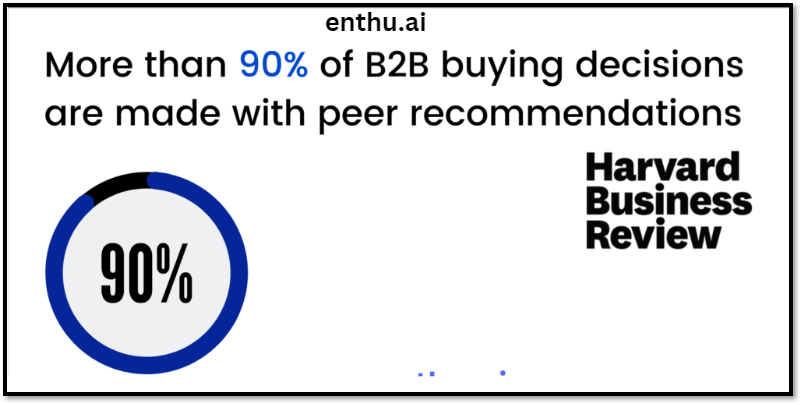
Therefore, you must provide exemplary services to the customers so that they not only recommend your product to other people but also renew the deal once it is over.
C. How to improve your stages of sales process?
Improving the sales cycle process is crucial for the success of any business.
Here are some key points to consider in order to improve the sales cycle process:
1. Define your sales process
The first step is to define the sales process from start to finish. This will help you identify the areas that need improvement and optimize the process for maximum efficiency.
2. Identify your target audience
Understanding your target audience is essential for successful selling. Identify their pain points, motivations, and objections to create effective sales strategies.
3. Invest in lead management
Use a CRM system to manage leads and automate lead nurturing activities. This helps you identify and prioritize leads that are most likely to convert into customers.
4. Focus on the value proposition
Clearly articulate the value proposition of your product or service to potential customers. Highlight the benefits of your product and how it solves their pain points.
Enthu.AI highlights important moments covered and missed in a sales call.
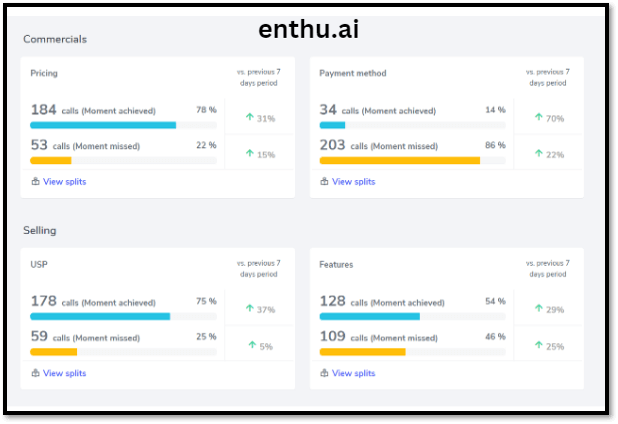
5. Personalize your approach
Personalize your approach to each prospect based on their needs, interests, and pain points. Use data-driven insights to tailor your message and approach for maximum impact.
6. Use social proof
Use customer testimonials, case studies, and social proof to build trust and credibility with potential customers. This will help to overcome objections and close more sales.
7. Measure and optimize
Continuously measure the effectiveness of your sales cycle process and make data-driven decisions to optimize it. Use analytics to track key performance indicators and identify areas for improvement.
By implementing these key points, you can improve your sales cycle process, increase conversions, and drive revenue growth for your business.
D. Why should you have a sales cycle?
As a sales rep, you probably take great pride in your talents to formulate new ideas and tactics.
However, defining the steps of the sales cycle can do wonders for your business.
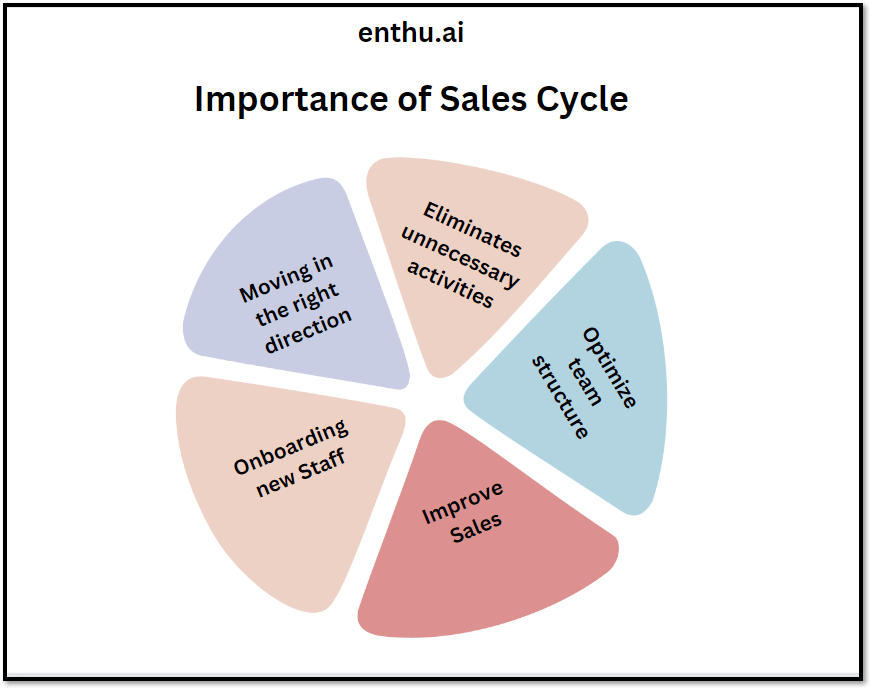
The reasons for having a sales cycle are:
1. Eliminates unnecessary activities:
With the defined sales process steps, you will know what things are working for you and what are not.
You can adapt the activities that cause prospects to move in the direction of a paying customer and get rid of activities that yield no results.
2. Optimize the team structure:
You can optimize the team structure and onboard competitive sales agents to support the sales process.
For example, if you know your biggest challenge is the assessment of the needs of the prospect, then you can devote more time to that step.
3. Improves sales:
At times, sales might not go as per your plan. So with the sales cycle in place, you will notice things that are causing sales to suffer.
Based on that, you can work on monitoring sales call and activities and implement actions that are required.
4. Onboarding new staff:
It is easy for you to onboard new staff based on the sales cycle process because of the short-term goals and long-term goals set for you.
For example, if you are looking to double your paying customer base in 3 months, then you might need more people at each stage to carry out the amount of work that is required to meet your goal.
5. Moving in the right direction:
Since the sales process is considered a sales rep’s roadmap, it will not be wrong to say that it helps sales reps to move in the right direction.
It defines what each step requires of the sales rep, where they are in the process, and what next step they should take.
E. Automate your sales process
Automating your sales cycle process can help streamline your workflow, save time, and increase efficiency.
Here are 5 best ways to consider when automating your sales cycle process
1. Implement a CRM system
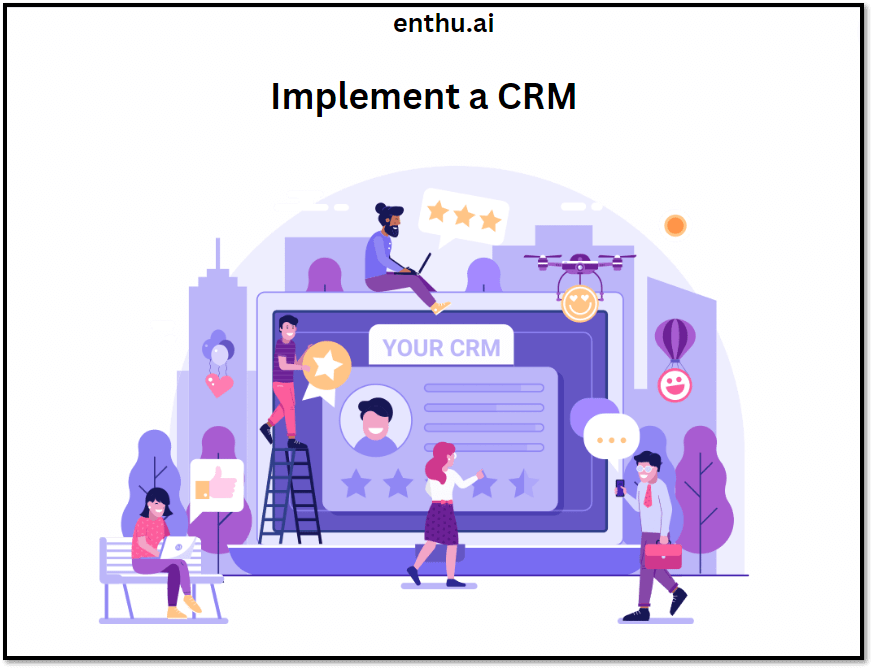
A Customer Relationship Management (CRM) system is a powerful tool to automate your sales cycle process. It helps to manage leads, track customer interactions, and automate sales tasks, such as lead nurturing and follow-up.
2. Use Marketing Automation Software
The best marketing automation software will help automate your lead generation process, including email marketing campaigns, social media ads, and landing page creation. By automating these tasks, you can focus on more important tasks, such as closing deals. So, integrating dedicated cold email software for personalized outreach, employing social media management tools for strategic engagement, or utilizing landing page builders can amplify your outreach endeavors.
3. Use Sales Engagement Tools
Sales engagement tools helps automate your sales process, including email tracking, call logging, and appointment scheduling. These tools can help you keep track of important sales metrics and optimize your sales strategy.
4. Implement AI-Powered Tools

Artificial Intelligence (AI) can be used to automate many sales tasks, such as lead scoring, chatbots, and predictive analytics. These tools can help you personalize your sales approach and increase conversions.
5. Set up conversation monitoring Dashboards
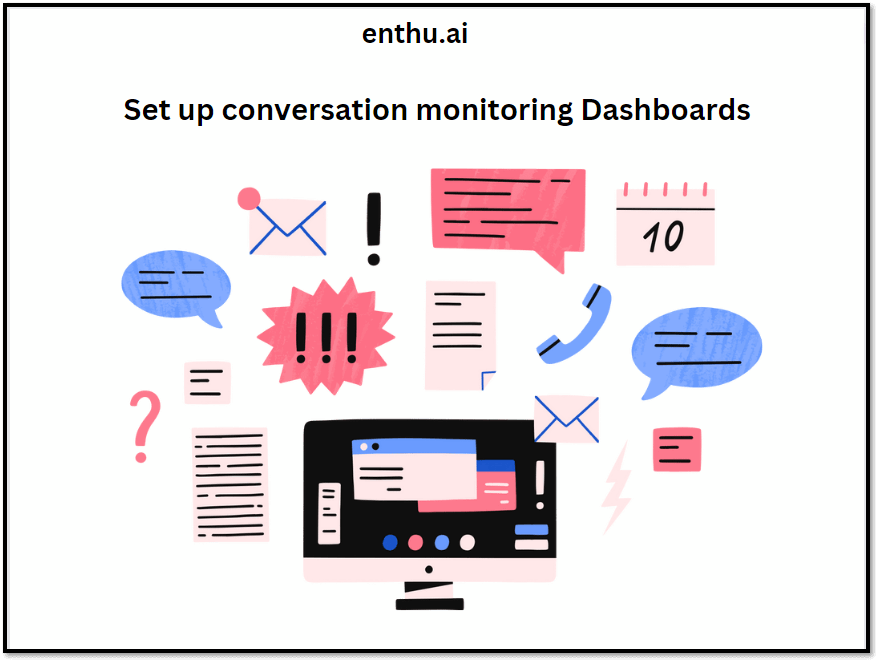
Software such as speech analytics (Enthu.AI) can help you track key performance indicators (KPIs) and monitor your sales team’s progress. By automating, you can stay up-to-date on your team’s performance and identify areas for improvement.
Conclusion
Overall the 7 stages of sales cycle provide a framework for sales professionals to follow in order to effectively close deals and maintain customer relationships.
By understanding and implementing each stage of the process and leveraging technology and data analysis, sales teams can increase their chances of success and drive revenue for their organization.
FAQs
What are the 7 stages of the sales cycle?
7 Stages of sales cycle are :- Prospecting,Contact and qualify, Needs Assessment,Present your product, Handling objections, Closing, Follow up
What is B2B sales cycle stages?
The B2B sales process has 5 stages: prospecting, identification, qualification, negotiation (or deal-making), and fulfillment. Our ultimate goal in the B2B sales process is to garner a commitment from our prospect of purchasing our product.
How do you plan a sales call?
Before you even plan the call, you need to know who your target individual or firm is, and what your goal is for the interaction. If your goal is to learn more about a potential market segment, then use this knowledge to plan your questions for the call.
